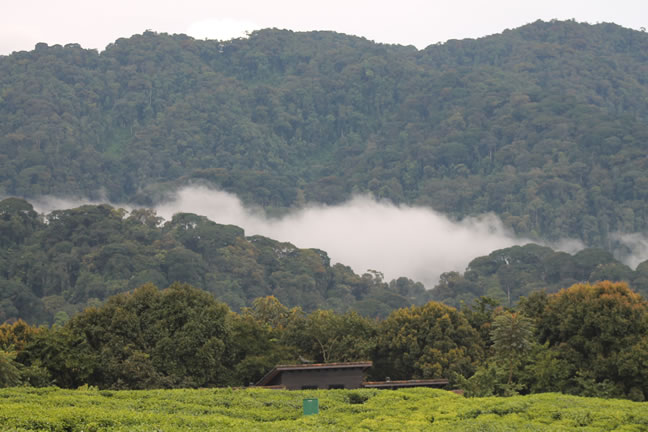Safaris in Murchison Falls National Park

13 Days Uganda Holiday Safari Experience
Tanzania safaris13 Days Uganda Holiday Safari Experience takes you to five National Parks in Uganda
ExploreMurchison Falls National Park.
About 325KM from Entebbe Airport to Murchison falls National Park (6 hours drive), the 3,840km2 National Park is one of Uganda’s oldest protected areas. Originally gazetted as a wildlife reserve in 1926, it was upgraded to form one of Uganda’s first national parks in 1952. The 5072km2 expanse of Murchison Falls NP and the contiguous Karuma and Bugungu Wildlife Reserves are managed collectively as the Murchison Falls Conservation Area. At Murchison Falls, the Nile explodes through an 6m wide gorge and plunges 45m into the ‘Devil’s Cauldron.’ The boat trip along the Nile to Murchison Falls is one of East Africa’s top wildlife spectacles.
The National Park lies at the northern end of the Albertine Rift Valley and it is Uganda’s largest and oldest conservation area, hosting 76 species of mammals and over 451 birds. The Park is bisected by the Victoria Nile which races west through the park for 80km, descending a series of rapids before exploding through a narrow (6m) gap in the remnant rift valley cliffs. This 45m plunge drains the last of the river’s energy transforming the torrent into a broad, placid stream that flows quietly across the rift valley floor towards Lake Albert. The river below the Falls provides one of Uganda’s finest wildlife spectacles. Regular visitors around and to the riverbank include Lions, Leopards, elephants, giraffes and buffaloes while hippos, Nile crocodiles and aquatic birds are permanent residents. The 1951 film “The African Queen” starring Humphrey Bogart was filmed on Lake Albert and the Nile below Murchison Falls. Other notable visitors to the park include Winston Churchill, Theodore Roosevelt, Ernest Hemingway and several British royals.
Activities and Attractions. The activities and attractions within and around Murchison National Park that are often of interest and that offer a stunning experience to wildlife enthusiast and holiday travellers include
Game viewing around-Buligi Peninsula: The park’s prime game viewing area lies on the Buligi Peninsula, a triangle of grassland bounded by the Victoria Nile entering Lake Albert, and the Albert Nile flowing out if it. Expect to see elephant, buffalo, antelopes and giraffe and keep your fingers crossed for lion and leopard. The game track network converges at Delta Point where the Nile flows north out of Lake Albert; this is a convenient place to stop for refreshments and view waterbirds offshore and distant hippos. Visitors can also take to the air to explore the plains north and west of Paraa in a hot air balloon. Contact the Jobihani Dream Balloons office at Paraa Safari Lodge
Paara (Home of hippos in local language): The park’s tourism hub is located on the banks of the Nile at Paraa, which appropriately means ‘home of the hippo’ in the local Luo language where you can be able to hot-spot the hippos in a large number. Indeed, this is the starting point for boat trips to the Falls and the delta. Consequently, much of it on a stretch of riverbank outside the park, 5km to the west.
Murchison Falls boat cruise: The launch voyage upriver from Paraa to see the Murchison Falls exploding through the cliffs at the head of Fajao Gorge is the park’s oldest and most popular excursion. The 3 hour return trip passes a wealth of riverside wildlife on the way, including resident hippos and crocodiles and visiting elephants, buffalo, etc. Excursions are run by UWA and private operators.
Top of the Falls: Visitors should be sure to visit the Top of the Falls viewpoint to see hear, and feel the Nile thunder through a 6m-wide gorge. The site can be reached by vehicle but it is more rewarding to disembark from the launch to climb up to the Top of the Falls through Fajao Gorge (a ranger escort is required for this walk).
Delta boat cruises: Boats also run downriver from Paraa to explore the Nile Delta where a maze of channels threads between wetland islands that choke the river’s exit into Lake Albert. These are rich in waterbirds, most notably the shoebill. This iconic rarity is best sighted in the delta during the December-February and June-September dry seasons. The river below Murchison Falls provides an exciting challenge for anglers with the record for Nile perch landed with rod and line standing at a hefty 108kg.
Heart of Murchison: While much of the southern part of MFNP is covered by bush and forest, a delightful tract of savanna rolls down to the river from the Rabongo road in the very centre of the park. Vehicle tracks have recently been opened in this area, which thanks to substantial herds of Uganda kob, is becoming known as a prime location for lions. The ‘Heart of Murchison’ lies 20km east of the Masindi-Paraa Road.
Chimpanzee tracking in Kaniyo Pabidi Forest: This forest in the south of Murchison Falls Conservation Area is home to a habituated chimp group which can be tracked with experienced forest guides. Kaniyo Pabidi Forest is an essential birding site due to the presence of Albertine Rift endemics and other ‘restricted range’ species including the chocolate-backed kingfisher, white-thighed hornbill and Puvel’s illadopsis. A comfortable lodge is found on site, while additional accommodation is available at Masindi town, 30km south.
Birding in the wilderness: Birding activities overlap with the wildlife viewing locations described above. Highlights include easy sightings of resident and waterbirds on the cruise to the Falls, thrilling shoebill sightings in the Nile delta and careful searches for rare range forest species.
Ziwa Rhino Sanctuary: The 70km2 Ziwa Rhino Sanctuary is home to Uganda’s only wild rhinos. Track them on foot and support this important step towards the eventual re-introduction of rhinos to protected areas. Ziwa lies close to the Kampala- Gulu road, 5km before the turning to Masindi.

13 Days Uganda Holiday Safari Experience takes you to five National Parks in Uganda
Explore